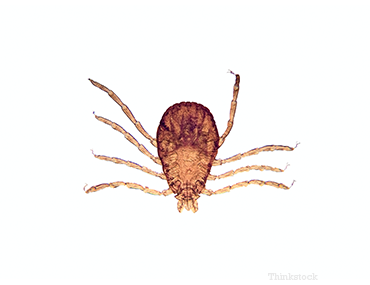
[Editor's note: This article covers E. canis which causes only one type of ehrlichiosis. E. ewingii and E. chaffeensis are different infections and create different clinical diseases.]
Ehrlichiosis is an emerging disease caused by a rickettsia: a type of bacteria that infects dogs, people, and less commonly cats. For dogs in North America and world-wide most cases of ehrlichiosis are caused by Ehrlichia canis (canine monocytotropic ehrlichiosis).1 Transmission is always from tick bites. Although people and dogs often live in close relationship to, and may come in contact with, the same species of tick, E. canis infections in people are thought to be rare.
E canis is most often transmitted by the brown dog tick (Rhipicephalus sanguineus). Infection likely requires several hours of tick attachment to the dog, and clinical signs may not appear for 1—3 weeks or longer.
Stages of ehrlichiosis in dogs
There are 3 differing stages of the disease in dogs.
Acute phase of ehrlichiosis:
- Clinical signs appear 1-3 weeks after exposure
- Fever, anorexia, lethargy
- Enlarged lymph nodes
- Thrombocytopenia (low platelet count) and bleeding tendency
Most dogs that are treated adequately recover at this point. Untreated dogs and some treated dogs may progress to the subacute and chronic phases.2
Subacute phase ehrlichiosis:
- Few, if any clinical signs
- Hypergammaglobulinemia (abnormally elevated immune proteins)
- Thrombocytopenia and anemia (low red cell count)
- This phase can last months to years
Chronic phase of ehrlichiosis:
- Lethargy, weight loss
- Reduction in red and white blood cell counts
- Bone marrow supression and bleeding
- Death
Less commonly, infected dogs can also exhibit inflammatory diseases of the eye and nervous system. The severity of the illness may be influenced by the disease strain, the dog’s immune status, and the presence of coinfections with other tick-borne or flea-transmitted pathogens.
Progression to subacute and chronic disease may be attributed to an ineffective immune response on the part of the dog. German Shepherds appear to be predisposed to the severe, chronic form of disease.
Diagnosing Ehrlichia in dogs
- A presumptive diagnosis may be made when clinical signs and a history of exposure to the tick vector lead to a high level of suspicion.
- Monocytes, a kind of white blood cell, can occasionally help with diagnosis.
- Confirmation may require using an anitbody test such as an ELISA that also looks for Anaplasma, Lyme disease, and heartworm infection. Polymerase chain reaction (PCR) to look for the organism’s DNA footprint is also commonly available.
Treatment options for ehrlichiosis in dogs:

- Doxycycline
- Minocycline
- Tetracycline
Treatment should be maintained for at least 4 weeks.
Prevention of ehrlichiosis
There is no available vaccine and the best ways to prevent these infectious bites are with year-round tick repellents, thorough body checks after being outside, and proper removal of ticks.
Once geographically limited, Ehrlichia spp. are now wide spread in distribution, and they are of particular concern in Gulf Coast states and through the Southeastern United States. The Companion Animal Parasite Council recommends that all dogs be tested yearly for tick-borne diseases and that all dogs be treated with effective tick-control agents year-round. Comprehensive screening is important to find coinfections and to determine the success of prevention strategies.
[Editor's note: Annual testing is important to protect your dog from ticks. Learn more here.]
If you have any questions or concerns, you should always visit or call your veterinarian -- they are your best resource to ensure the health and well-being of your pets.
References
1. Little SE. Ehrlichiosis and Anaplasmosis in dogs and cats. Vet Clin North Am Small Anim Pract. 2010, 40(6): 1121-1140.
2. Harrus S, Waner T, Neer TM. Ehrlichia and anaplasma infections: Ehrlichia canis infection. In: Greene CE, ed. Infectious Diseases of the Dog and Cat. 4th ed. St Louis, MO: Saunders; 2012:227–258.
